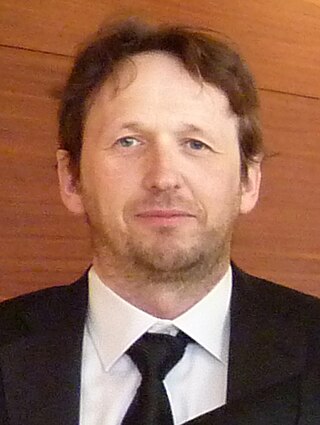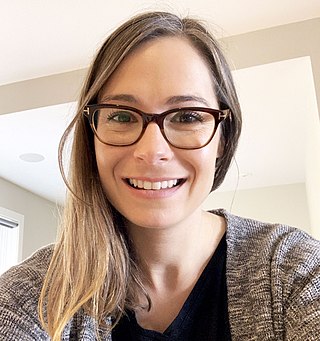
Philip Greenspun is an American computer scientist, educator, early Internet entrepreneur, and pilot who was a pioneer in developing online communities like photo.net.

Second Life is an online multimedia computing platform that allows people to create an avatar for themselves and then interact with other users and user-created content within a multi-user online virtual world. Developed and owned by the San Francisco–based firm Linden Lab and launched on June 23, 2003, it saw rapid growth for some years and in 2013 it had approximately one million regular users. Growth eventually stabilized, and by the end of 2017, the active user count had fallen to "between 800,000 and 900,000". In many ways, Second Life is similar to massively multiplayer online role-playing games; nevertheless, Linden Lab is emphatic that their creation is not a game: "There is no manufactured conflict, no set objective."

Joichi "Joi" Ito is a Japanese entrepreneur and venture capitalist. He is the President of Chiba Institute of Technology. He is a former director of the MIT Media Lab, former professor of the practice of media arts and sciences at MIT, and a former visiting professor of practice at Harvard Law School. Ito has received recognition for his role as an entrepreneur focused on Internet and technology companies and has founded, among other companies, PSINet Japan, Digital Garage, and Infoseek Japan. Ito is general partner of Neoteny Labs, and former board member of Creative Commons, The Electronic Privacy Information Center (EPIC), The Internet Corporation for Assigned Names and Numbers (ICANN), John S. and James L. Knight Foundation, The New York Times Company, John D. and Catherine T. MacArthur Foundation, The Mozilla Foundation, The Open Source Initiative, and Sony Corporation. Ito wrote a monthly column in the Ideas section of Wired.

Anthony Michael Fadell is an American engineer, designer, entrepreneur, and investor. He was senior vice president of the iPod division at Apple Inc. and founder and former CEO of Nest Labs.

MIT Technology Review is a bimonthly magazine wholly owned by the Massachusetts Institute of Technology, and editorially independent of the university. It was founded in 1899 as The Technology Review, and was re-launched without The in its name on April 23, 1998, under then publisher R. Bruce Journey. In September 2005, it was changed, under its then editor-in-chief and publisher, Jason Pontin, to a form resembling the historical magazine.

Philip Rosedale is an American entrepreneur who founded Linden Lab, which develops and hosts the virtual world Second Life.

Linden Research, Inc., doing business as Linden Lab, is an American technology company that is best known as the developer of Second Life.

Anshe Chung is an avatar of Ailin Graef in the online game Second Life. Referred to as the "Rockefeller of Second Life" by CNN, Graef has built an online business that engages in development, brokerage, and arbitrage of virtual land, items, and currencies. Her work has been discussed in Business Week, Fortune and Red Herring.

Philip W. Schiller is an Apple Fellow at Apple Inc. He is a prominent figure in Apple's keynotes and has been a member of the company's executive team since Steve Jobs returned to Apple in 1997. In 2020 he became the first person in over 20 years to be appointed as an Apple Fellow, one of the company's highest-ranking positions and an honor previously bestowed on co-founder Steve Wozniak among a handful of other people.

Rodvik Humble is a British video game designer. He is the former chief executive officer of Second Life developer Linden Lab, Chief Creative Officer at ToyTalk, and former executive vice president for the EA Play label of the video game company Electronic Arts. He is the general manager for the Berkeley studio of Paradox Interactive. He has been contributing to the development of games since 1990, and is best known for his work on the Electronic Arts titles, The Sims 2 and The Sims 3. Previously, he worked at Sony Online where he worked on EverQuest and before that Virgin Interactive's SubSpace.
The Patriotic Nigras were a group of griefers in the online world of Second Life.

Veronica Ann Belmont is an American online media personality. She was formerly the co-host of the Revision3 show Tekzilla alongside Patrick Norton. Belmont was the co-host of the former TWiT.tv gaming show Game On! along with Brian Brushwood, and the former host of the monthly PlayStation 3-based video on demand program Qore. Additionally, she was the host for the Mahalo Daily podcast and a producer and associate editor for CNET Networks, Inc. where she produced, engineered, and co-hosted the podcast Buzz Out Loud.

Bragg v. Linden Research, Inc., 487 F. Supp. 2d 593, was a ruling at the United States District Court for the Eastern District of Pennsylvania. The case resulted in an important early ruling on the enforceability of an online End User License Agreement (EULA) under American contract law, though it did not ultimately gain influence as a precedent. The ruling also clarified the matter of personal jurisdiction for a dispute involving a user of a website that originates in a different region.
Richard P. Minsky is an American scholar of bookbinding and a book artist. He is the founder of the Center for Book Arts in New York City.

Bradley Joseph Horowitz is an American entrepreneur and internet executive. He is a vice president at Google.
High Fidelity is an American company headquartered in San Francisco, which formerly focused on social virtual reality. As of 2020, they appear to have pivoted to 3D audio software.
The 59th Technology and Engineering Emmy Awards was held on January 8, 2008 at the 2008 International Consumer Electronics Show in Las Vegas.
Jeff Williams is Apple's chief operating officer under CEO Tim Cook, a position he has held since December 2015.

Tara Hernandez is a professional software developer, and veteran open source contributor, who developed procedures and tools at several Silicon Valley companies. She was an early promoter of what came to be known as the Continuous Integration revolution. As shown in the documentary Code Rush, she was the manager of Netscape Navigator development at Netscape Communications Corporations, and worked on the preparation of the original Mozilla code for public release, which led to the development of the Firefox browser. She has also worked as a Release Team Manager at Blue Martini software, Senior Infrastructure Engineer and Team Lead at Pixar Animation Studios, Senior Engineering Manager at Lithium Technologies, Senior Director of Systems and Build Engineering at Linden Lab, and worked as a Senior Engineering Manager at Google. Tara is currently employed by MongoDB as Vice President of R&D Productivity, where her role is to lead the development of engineering CI/CD systems, builds of various MongoDB software on 40+ platforms, and the performance tooling team.
Sansar is a social virtual reality platform, for Microsoft Windows only, developed by the San Francisco-based firm Linden Lab, and now owned by Sansar Inc. It launched in "creator beta" to the general public on July 31, 2017. The platform enables user-created 3D spaces where people can create and share interactive social experiences, such as playing games, watching videos, and having conversations in VR. Each participant is represented by a detailed avatar that is the graphical representation of the user, including speech-driven facial animations and motion-driven body animations.














